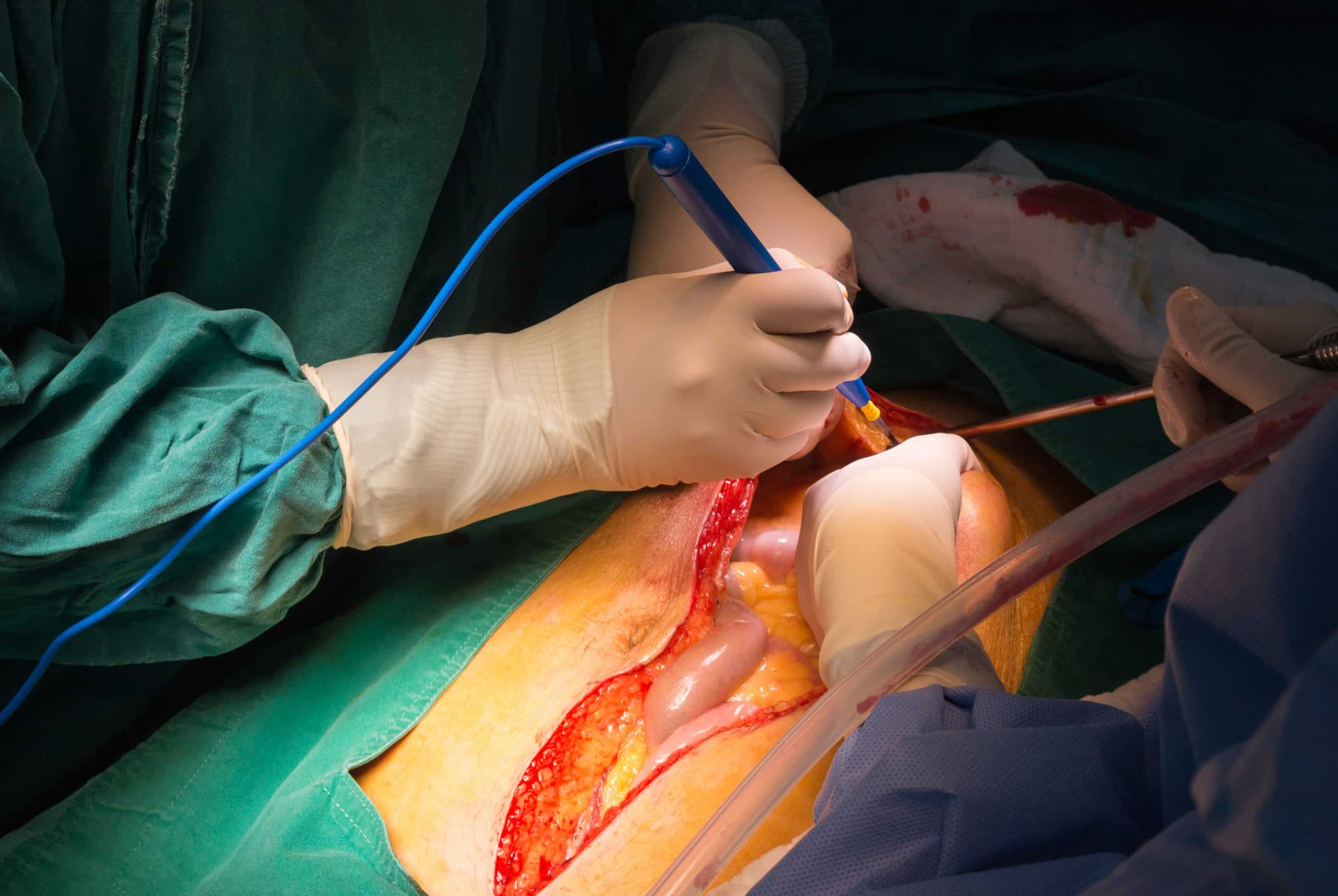This article is for educational purposes only. It should not be used as a template for consenting patients. The person obtaining consent should have clear knowledge of the procedure and the potential risks and complications. Always refer to your local or national guidelines, and the applicable and appropriate law in your jurisdiction governing patient consent.
Overview of Procedure
A laparotomy involves opening the abdominal cavity, typically through a midline approach, to allow for greater access to the abdomen, also allowing for assessment of each organ in turn, including inspecting the entire length of the bowel, palpating the liver and spleen, inspecting the gallbladder, and in the female assessing the uterus and ovaries.
Intra-Operative
| Complication | Description of Complication | Potential Ways to Reduce Risk |
| Haemorrhage | Particularly in the case of abdominal trauma, where the use of a cell-saver may be required, as well as a potential blood transfusion. | |
| Injury to surrounding structures including bowel, bladder and ureter, liver, spleen | A laparotomy involves assessing all organs, which can be damaged in the process. | Decompress the bladder with a catheter (also important for intra-operative monitoring of urine output in major cases) |
| Bowel resection and formation of a stoma | This is always a possibility in any bowel operation, either pathology-related or iatrogenic damage, and should be consented for | |
| Anaesthetic Risks | Includes damage to the teeth, throat and larynx, reaction to medications, nausea and vomiting, cardiovascular and respiratory complications. | Forms a part of the anaesthetist assessment before the operation |
Early
| Complication | Description of Complication | Potential Ways to Reduce Risk |
| Pain | The patient will most likely have an epidural or patient controlled analgesia to minimise this.
Local anaesthetic into the incision edges at closure will reduce wound-related pain |
|
| Bleeding | There is a small chance of bleeding and bruising in the abdomen post-surgery. Depending on the reason for laparotomy packs may be left in place to arrest bleeding and removed the following day, e.g. in liver trauma | |
| Infection | Superficial wound infection is possible, however collections in the pelvis or paracolic gutters can also occur with intra-abdominal infections. | Peri-operative antibiotics will reduce the risk of wound infections |
| Re-operation / intervention | This occurs in 5-10% of emergency laparotomies, commonly due to anastomotic leaks, collections, or wound dehiscence. | |
| Anastomotic leak | Likewise, occurs in around 5% of emergency bowel resections. If this occurs, the patient will usually require further surgery and stoma | |
| Ileus | Handling of the bowel can reduce the bowel motility, which can take several days to return to normal function | Minimise excessive handling of bowel |
| Scarring | A midline or transverse incision will result in a scar, which may form a keloid scar, particular in high risk ethnicities. | |
| Blood Clots | DVTs and PEs are a possibility in any operation. The risk is increased in patients with a raised BMI, on the pill, recent flights, previous DVT, pregnancy, smokers, cancer and prolonged bed rest. | The patient will be given anti-embolism stocking and low molecular weight heparin peri-operatively to minimise this risk as deemed appropriate. |
| Stroke, MI, Kidney Failure, Death | Although small, this is always a risk in any major surgery |
Late
| Complication | Description of Complication | Potential Ways to Reduce Risk |
| Hernia | Any laparotomy incision has the potential to cause a hernia in the future. | Avoid heavy lifting for 6 weeks post-surgery. |
| Adhesions | Abdominal surgery may cause adhesions as a reaction to the procedure, which can result in adhesional bowel obstruction months to years after the operation |

